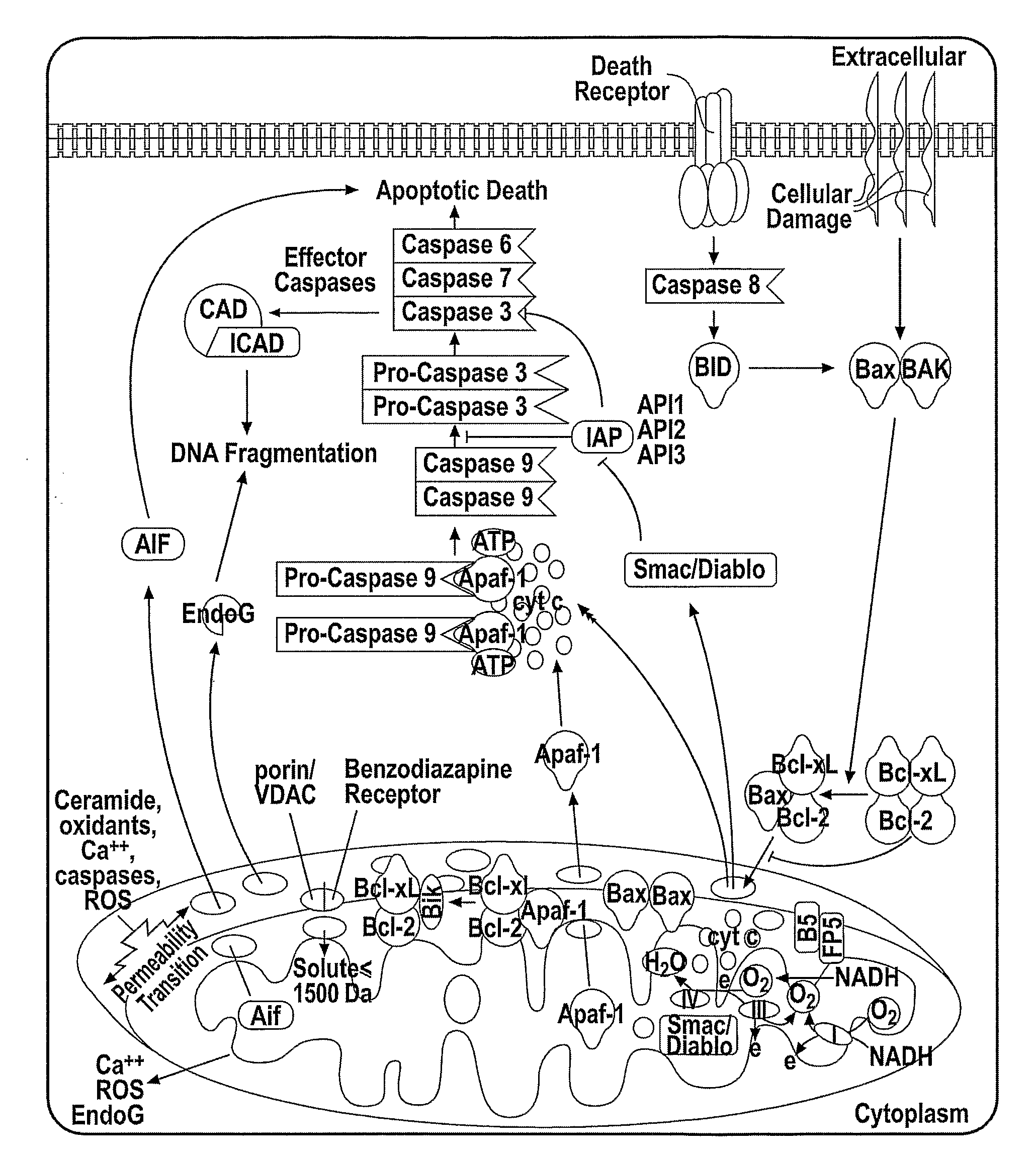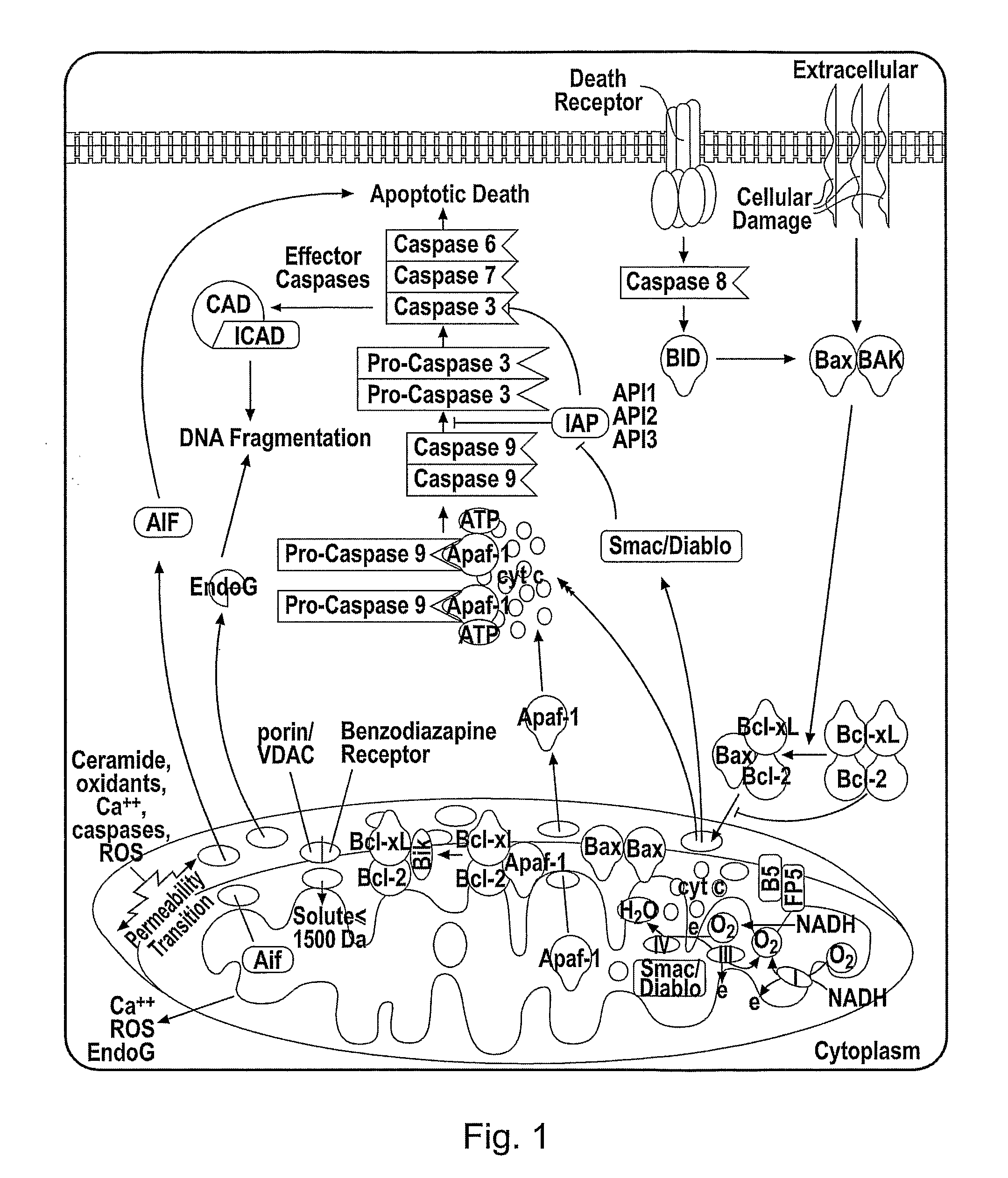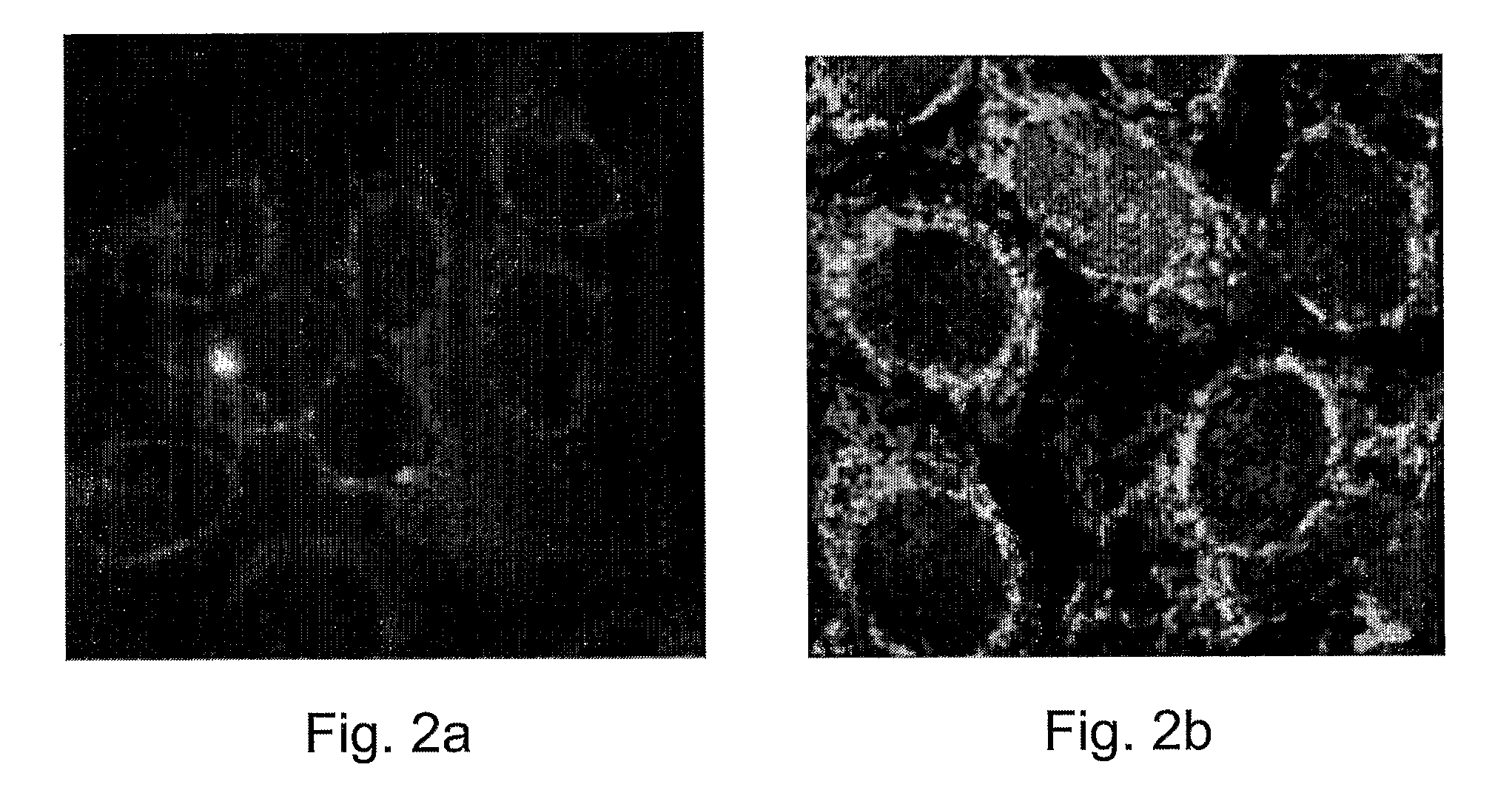Cytochrome c protein and assay
a cytochrome c protein and assay technology, applied in the field of cytochrome creporter fusion protein constructs, can solve the problems of not being able to meet high throughput live cell screening, using cells in suspension, and not providing homogeneous living cell assays
- Summary
- Abstract
- Description
- Claims
- Application Information
AI Technical Summary
Benefits of technology
Problems solved by technology
Method used
Image
Examples
example 1
Amplification of the Cytochrome c Gene, Fusion to GFP (F64L-S175G-E222G) and Introduction of the K72A (APAF-1 Binding) Mutation
[0092]The fluorescent-cytochrome c mutant fusion proteins of the current invention were produced by joining, in frame, a sequence of the nucleic acid that encodes for the cytochrome c protein to a sequence of the nucleic acid that encodes for a fluorescent protein and then introducing the K72A (APAF-1 binding) mutation (Kluck et al., J Biol Chem., (2000) 275, 16127-16133)) to the nucleic acid of the fusion construct. A preferred sequence of the human cytochrome c gene is described by Zang and Gerstein (Gene, (2003) 312, 61-72); NCBI Accession number NM—018947. (SEQ ID NO: 1) the encoded protein is shown in SEQ ID NO: 2. Alternative human cytochrome c sequences may be used. In addition, alternative sequences around the start and stop codons of the gene may be used to provide useful restriction enzyme sites for protein fusion. Where such alterations change the...
example 2
Influence of Cytochrome c-K72A (APAF-1 Binding) Mutation Upon GFP-Fusion Protein Stable Cell Line Generation in Mammalian Cells
[0100]Plasmid DNA to be used for transfection was prepared for all constructs using the HiSpeed plasmid purification kit (Qiagen, Westberg, NL). In addition to the constructs in example 1, pCORON1000-GFP and pCORON2100-GFP were used as selection controls. DNA was diluted to 100 ng. μl−1 in 18-Megohm water (Sigma, Dorset, UK) and 1 μg used for transfections. For 50-80% confluency on the day of transfection, Hek293 cells were plated at a density of 5×104 / well in 6-well plates and incubated overnight. A 1:3 (1 μg:3 μl) ratio of DNA to FuGene6 reagent (Roche Diagnostics, Basel, Switzerland) was used for each transient transfection reaction; 3 μl FuGene6 was added to 87 μl serum-free DMEM medium (Sigma) (containing penicillin / streptomycin, L-glutamine [Invitrogen, Carlsbad, Calif.]) and gently tapped to mix, then 10 μl (1 μg) construct DNA was added and again gen...
PUM
| Property | Measurement | Unit |
|---|---|---|
| temperatures | aaaaa | aaaaa |
| diameter | aaaaa | aaaaa |
| fluorescent | aaaaa | aaaaa |
Abstract
Description
Claims
Application Information
 Login to View More
Login to View More - R&D
- Intellectual Property
- Life Sciences
- Materials
- Tech Scout
- Unparalleled Data Quality
- Higher Quality Content
- 60% Fewer Hallucinations
Browse by: Latest US Patents, China's latest patents, Technical Efficacy Thesaurus, Application Domain, Technology Topic, Popular Technical Reports.
© 2025 PatSnap. All rights reserved.Legal|Privacy policy|Modern Slavery Act Transparency Statement|Sitemap|About US| Contact US: help@patsnap.com



